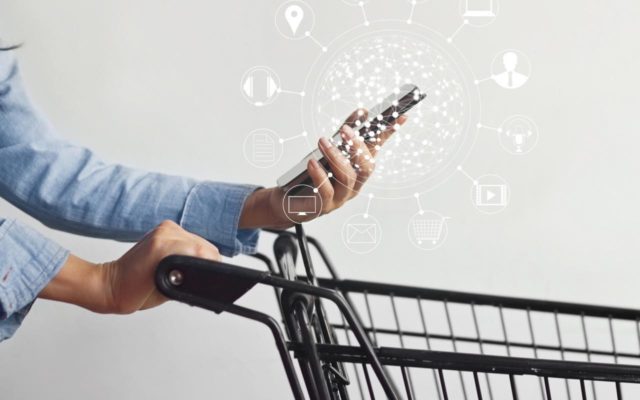Every month seems to bring more depressing retail statistics of once loved brands… Last year Poundworld, Toys R Us and Maplin. Recently, Debenhams and even retail giant John Lewis had to slash staff bonuses as profit fell 45%.
Not agile enough to have adapted to a fluctuating and highly competitive customer-driven environment? Struggling with debt and unable to compete with digitally native giants such as Amazon?
Leaving boarded shop fronts. It’s sad.
The impact of this trend is felt across the nation – the retail industry is the biggest employer in the private sector. The British Retail Consortium warned there could be up to 900,000 fewer jobs in retail over the next decade.
But in amongst the ‘doom and gloom,’ there are nuggets of hope and success stories. Retailers who are bucking the trend!
If our retail habits have changed forever, what are the opportunities for retailers to ‘fight back’?
In a series of interviews, our retail and customer experience expert Jonathan Hilton discusses the ‘future of retail’; what the current trends are, where the opportunities lay, and advice on how retailers can survive and indeed flourish. In our first interview, retail reinvented, we explore:
- Changing consumer behaviour
- The impact of digital ‘pure play’ businesses
- The biggest opportunities for retailers
Sophie: Hi Jonathan, thanks for your time today. Can you introduce yourself and what you do at Digital Works Group?
Jonathan: Yes, I’ve recently joined Digital Works Group as a partner within the Strategy, Leadership and Innovation practice with a focus on retail and telco. I help businesses look at their customer experience and the digitisation of customer experience in these industries. Helping them to adapt and develop this vital part of the business.
I have over 20 years’ experience, both on agency and client side. Most recently, leaving Vodafone as the Head of Retail, where I created their strategy and vision for the Vodafone board.
Sophie: Jonathan, we are going to be discussing the future of retail. Firstly, can we talk about the impact of changing consumer behaviour on retail?
Jonathan: Retail has changed phenomenally over the last few years. But it’s also part of a trend that’s been going on for decades.
Originally we had marketplaces with individual sellers of fruit, veg and meat, then moving on to destination supermarkets and malls. We’re now in the next transition – the digital evolution with online bringing retail to the homes of people. Customers are changing the way they shop.
What is important to understand is that shopping can be broken down into three core areas. Firstly is the focus around convenience. Customers are always going to want this – maybe in terms of ability to pick something up quickly, or the fact that a store is around the corner. But it’s important that this factor is at the heart of whatever goes forward.
Secondly, the social aspect of retail can’t be ignored. People like human interaction and being around other people – whether that’s a sales advisor in a store with a customer or a family or group of friends going into a shopping environment. Shopping is about social interaction.
The final part of the jigsaw is where physical retail has an advantage over online – and that is experience. If I want to buy a sofa, it’s unlikely I will just go online and buy it. Instead, I may go into the high street and try it and buy it there, or go home and order it. The point is that you need to experience these things.
Wrapped around all of this is the fact that physical retail can engage in face to face conversation, explaining complex things in a simple way that means that customers can walk away with confidence that they’re making the right purchase decisions.
Sophie: How have digital ‘pure play’ businesses changed the retail playing field?
Jonathan: The pure-play multi-brands – the Amazons and Alibaba’s – are set up from the start to be efficient operations that are looking at logistics, choice and price as the key drivers of their business and challenge to the high street.
They’ve done incredibly well, and you’d find it very hard to talk to anybody one of your friends who hasn’t made a purchase of one of these types of sites in the last three months.
If you think about a Cash and Carry or Costco destination type store – where people go and spend two or three hours getting the family shopping; from toilet paper, through to food and electrical goods. Amazon can now provide that with free delivery from the comfort of your home.
What would now motivate a customer to go to a great big, rather faceless place? The reality is, that you still get to have an experience. Pure plays are realising that these ‘experiences’ are a really important part of the customer’s engagement with you as a brand.
And we already know that where physical stores are opened the online traffic in that catchment area goes up significantly – in some cases by 45-50%. So what is important is the way in which the brand is able to communicate to the human and start to deepen that relationship with the customer.
Sophie: What impact is this having on ‘traditional’ businesses? How are they at a disadvantage?
Jonathan: The disadvantage is the cost to operate. A digital pure play costs far less than running a retail footprint across the UK or Europe. That said, retailers are starting to wake up and understand why the digital pure plays have had so much success – because they’re using digital tools to enable that business to work in a much better way and to provide customers with exactly what they want.
The customer isn’t having to go through the complexity of finding things – they can find recommendations based on their purchase history. They’re made offers which are personal to them, rather than to a segment. So this is getting closer to the nirvana of one to one personalised marketing. And this is what the pure plays have managed to do.
Sophie: What are the biggest opportunities for retailers in your opinion?
Jonathan: I think the biggest phenomenon in recent years is the mobile device. Pretty much everybody has one when they walk into a store. People can pull out their device, go online, and check prices or reviews to support their decision-making on the spot.
Retailers are only beginning to get to grips that the mobile device is a two-way communication tool – offering an opportunity for a store to interact with the customer as well. The phone becomes the link between the physical world and the digital world.
I also think there’s another important area of opportunity and that’s the ability for physical stores to provide an exciting space where customers really want to go and visit.
Examples of destination stores are made.com, Nike and Dyson. What you get in these stores is a lot more than you get in a standard retail environment.
The reason that these brands are investing in such big experience-led stores is because it helps them position themselves within the customer’s mind in a way which traditional stores often can’t.
Sophie: How do you think retailers can encourage the rejuvenation of the high street?
Jonathan: Really the shopping ‘experience’, is critical.
We know that customers are absolutely accepting a digital-only proposition, but there are functional reasons why people will still come to the high street – you can order something from John Lewis, and you can pick it up at your local Waitrose through click and collect.
But most importantly there are the ‘experiential’ and ‘emotional’ reasons – which are related to the ability to go in and trial and experience in a physical store location. For example, what if you are looking to purchase a buggy?
You generally want to go and do that in the store itself. Retailers need to start to think of services they can provide, rather than simply selling a product. The service experience is critical and is one which will attract customers who seek you out.
The good news is when done well, the basket value is much higher – Mamas and papas will give you a personal one-on-one shopping experience which takes you through everything you need for your first child, offering expert help and advice. Their average basket size is over £1,000 pounds.
The sales environment is evolving. Sales staff need to be empathetic and listen to the concerns of the customer. On the fly, they should be able to navigate complex conversations and provide excellent reassurance to the customer that they’re making the right purchase decision.
This is about building a brand relationship and evolving future customer loyalty via an in-store relationship. In the ultimate goal for physical retailers.
If retailers get this right and carve themselves out as a destination store, they will reap the benefits offline and online too.
Article by channel:
Everything you need to know about Digital Transformation
The best articles, news and events direct to your inbox







